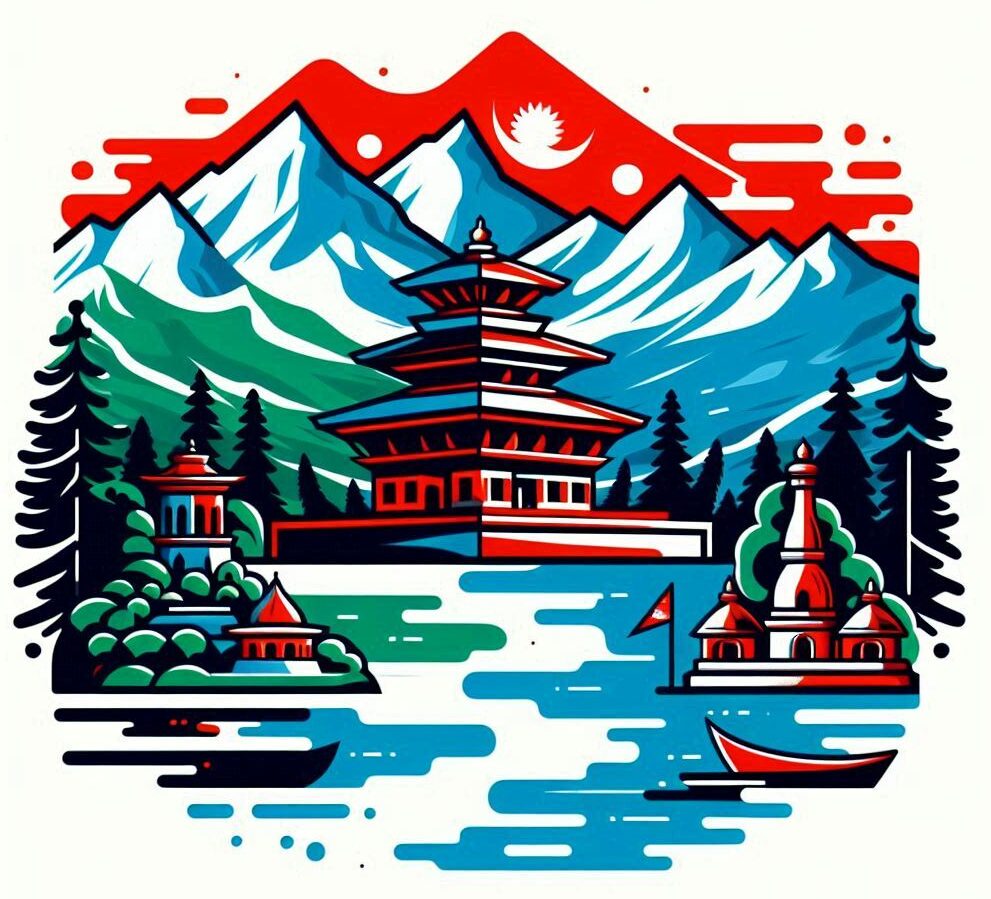Nepal’s landscapes are very diverse, bringing together the majestic Himalayas, lush green valleys, and those picturesque villages. It’s the go-to spot for trekkers because no other place offers such a thrilling hike through incredibly diverse terrain.

You’ve got so many options when it comes to trekking routes across Nepal. From the rugged paths leading to Everest Base Camp to the more tranquil trails of Langtang Valley, each trek has its own flavor and charm. These trails not only challenge you physically but also bless you with jaw-dropping views that make every step worth it.
When you trek in Nepal, it’s not just about hiking through the mountains, you’re diving into a deep pool of culture and nature. Trekking’s an integral part of Nepal’s heritage, giving you a taste of everything from its historic temples to rich wildlife. You’re basically walking through a living museum.
Whether you’re a newbie just getting your hiking boots dirty or a seasoned hiker who lives for steep trails, Nepal’s got something for everyone. Some routes are the equivalent of a friendly stroll, while others are more like an intense climb, challenging but very rewarding in the end.
Top Trekking Routes for Unforgettable Experiences
When it comes to trekking routes, Nepal’s like a giant treasure chest packed with adventure gold. Everest Base Camp Trek is the crown jewel, offering a chance to walk where mountaineering legends have tread. It’s more than just a trek, it’s a brush with history and a shot of adrenaline as you approach the legendary Everest Base Camp and gaze upon Everest’s towering peak.
The Annapurna Circuit has a beautifulmix of landscapes that keeps the trek from ever feeling dull. You’ll start in lush subtropical forests and slowly make your way up to the barren beauty of the Thorong La Pass, with 5,416 metres the highest point of the Annapurna Circuit Trek. Annapurna isn’t about speed, it’s about soaking in the changes every step of the way.
For those seeking tranquility, the Langtang Valley is like a peaceful retreat close to the rush of the Kathmandu Valley. Trekking here means gazing at glaciers, meeting locals in charming villages, and getting a solid dose of Nepal’s stunning natural beauty.
Upper Mustang brings something totally different to the trekking scene. Often called the ‘Forbidden Kingdom’, this region reveals a slice of Tibetan culture hidden from the rest of the world. Trekking through its arid landscapes and ancient monasteries is like stepping into a time capsule of history and culture.
Each of these routes has its unique allure, presenting a mix of stunning views, cultural insights, and adventure. Whether you’re in it for the thrill, the peaceful surroundings, or the chance to connect with a different culture, there’s a path in Nepal that’ll hit the spot.
Essential Tips for Trekking in Nepal
Getting ready for a high-altitude trek in Nepal involves more than just putting on hiking boots. It’s crucial to consider the impact of altitude on your body. Staying hydrated, acclimatizing properly, and not pushing yourself too hard at early stages can make all the difference in staying healthy and enjoying the trek.
Packing the right gear is like packing your toolkit for an epic adventure. Layers are your best friends since weather can swing from hot to freezing in a day. Don’t forget a pair of good trekking poles – they’re lifesavers for your knees, especially on downhill stretches.
Timing is everything, especially when it comes to trekking in Nepal. The best seasons are pre-monsoon from March to May and post-monsoon from September to November. You’ll be rewarded with clear skies and views that seem to go on forever.
Permits are part of the game if you want to explore Nepal’s majestic mountains. You’ll need them for entering national parks and conservation areas. Knowing what permits are necessary not only keeps you out of trouble but ensures your trip is smooth sailing. Check also if the trek you select requires to be accompanied by a guide.
Cultural and Environmental Impact of Trekking
Trekking in Nepal isn’t just about chasing those epic views—it also has a significant impact on the culture and environment. Being eco-friendly isn’t some buzzword here; it’s a lifeline for preserving the stunning landscapes that make these treks so legendary. Simple actions, like sticking to marked paths and packing out all your trash, make a huge difference in keeping Nepal’s beauty intact.
Interacting with local communities along the trails isn’t only a highlight of the journey; it’s a gateway to understanding and appreciating Nepal’s rich heritage. When you spend in local tea houses or buy handmade crafts, you’re contributing to the economy in a way that benefits local families directly. Plus, genuinely engaging with locals can provide enriching insights into their daily lives—leaving a positive mark both ways.
Sustainable tourism is the heart of responsible trekking. This means making choices that support conservation efforts and reduce environmental footprints. From choosing eco-friendly accommodations to supporting projects focused on wildlife protection, your efforts help ensure these treks are available for future adventurers.
By choosing to tread lightly and embrace responsible practices, trekkers can have a profound positive impact. It’s about ensuring the trails remain accessible and breathtaking for years to come, while simultaneously fostering a mutually beneficial cultural exchange. This shared connection with the land and its people elevates trekking in Nepal from just an adventure to a meaningful journey.
